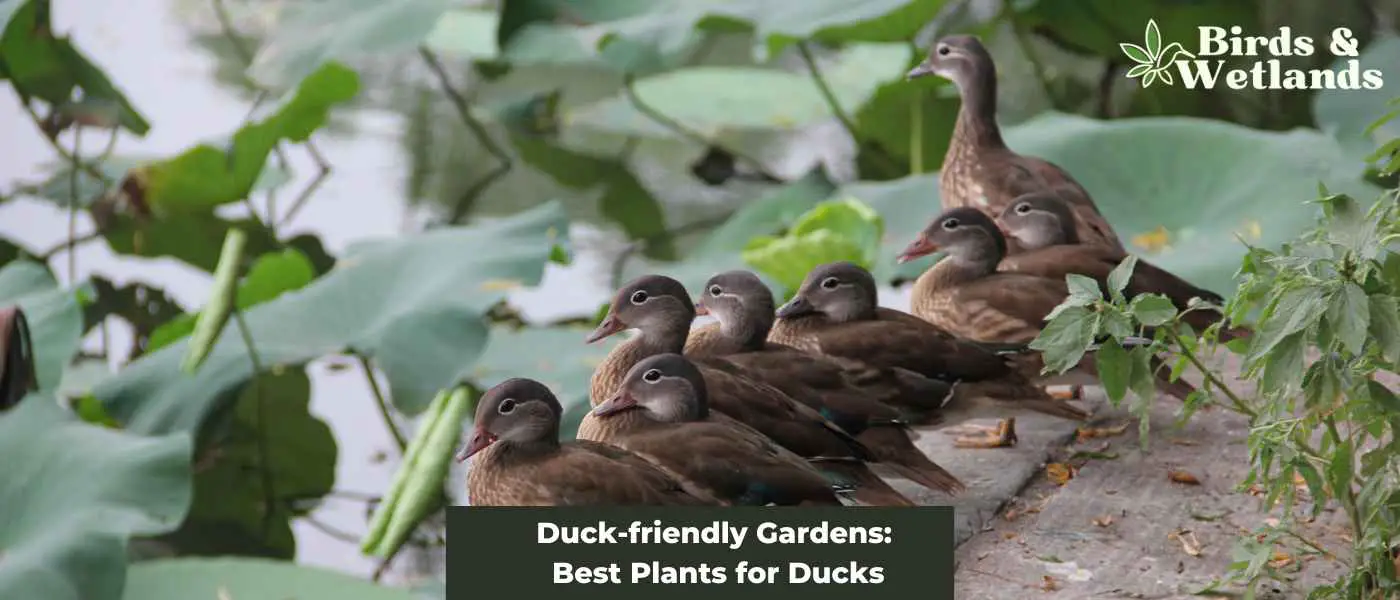Creating a duck-friendly garden can greatly improve the quality of life for your feathered friends while also providing a beautiful and functional outdoor space for you.
Ducks are not only adorable, but they can also be beneficial for your garden by controlling pests, eating slugs, and even fertilizing the soil with their nutrient-rich droppings.
In this guide, we’ll explore the best plants for ducks, focusing on varieties that are safe, nutritious, and appealing to both ducks and humans. With the right selection of plants, you can create a garden paradise that both you and your ducks will enjoy.
The best plants for ducks provide both nutritional value and a natural habitat. Some top choices include duckweed, water lettuce, water hyacinth, cattails, watercress, and wild rice. These aquatic plants not only offer sustenance, but also create a comfortable and engaging environment for ducks to explore, forage, and take shelter.
Key takeaways
- Choose plants that offer nutrition and a natural habitat for ducks
- Top picks: duckweed, water lettuce, water hyacinth, cattails, watercress, wild rice
- These aquatic plants support foraging, exploration, and shelter
Why Plants are Important for Ducks
Ducks are waterfowl that rely on natural habitats for their survival. Wetlands, ponds, and other water bodies provide ducks with a suitable environment to thrive. Plants play a crucial role in the life of ducks as they provide a variety of benefits. This section will explore the importance of plants for ducks and their habitat.
Nutrition
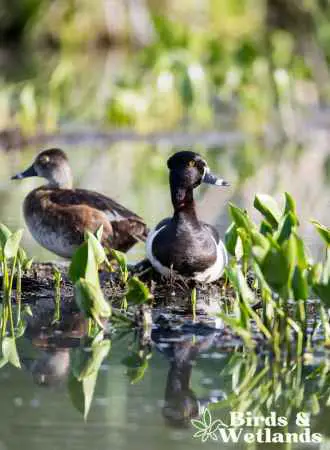
Plants are a significant food source for ducks. They rely on aquatic plants for their nutrition, which includes seeds, tubers, and aquatic invertebrates. Different species of ducks have varying preferences when it comes to their food source.
For example, gadwalls and American wigeon prefer the leafy portions of aquatic vegetation, while canvasbacks, redheads, and scaup feed heavily on roots and tubers. Ring-necked ducks consume more leafy plant material and seeds.
Cover and Nesting
Plants provide cover and nesting sites for ducks. Dense vegetation provides a safe haven for ducks to rest and hide from predators. During nesting season, ducks rely on plants to create a suitable environment for their offspring. Wetlands with a variety of vegetation provide the necessary cover for ducks to nest and raise their young.
Foraging
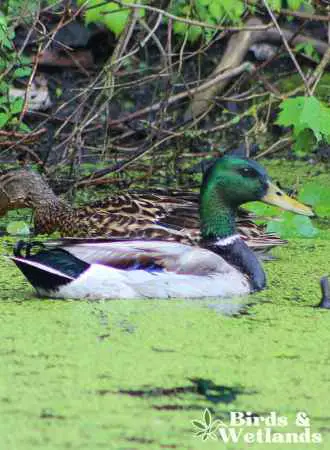
Plants play a crucial role in the foraging behavior of ducks. Ducks use their bills to sift through water and mud to find food. Plants growing in shallow water provide ducks with easy access to their food source. Moist soil plants, often considered weeds, provide a diversity of seeds, tubers, and aquatic invertebrates that ducks can forage on.
Plants are an essential component of the habitat for ducks and other wildlife. They provide nutrition, cover, and nesting sites for ducks. They also play a crucial role in the food chain as a food source for ducks and other animals. Wetlands with a variety of vegetation provide the necessary habitat for ducks to thrive.
Best Plants for Ducks
When it comes to attracting ducks to your property, planting the right vegetation can make all the difference. Ducks rely on a variety of plant species for food and cover, and by planting a diverse range of plants, you can create a thriving habitat for waterfowl. Below are some of the best plants for ducks, organized by category.
Aquatic Plants
Aquatic plants are an essential component of any duck habitat. They provide cover, nesting sites, and food for waterfowl. Some of the best aquatic plants for ducks include:
- Wild Celery: This underwater plant is a favorite of canvasback ducks and can be found in shallow water.
- Duckweed: This floating plant is high in protein and is a favorite of many species of ducks.
- Wild Rice: This tall, aquatic grass produces a nutritious seed that is a favorite of many ducks.
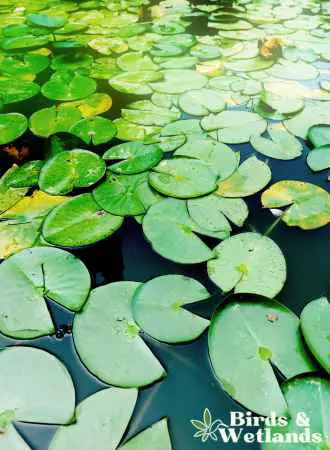
Grasses and Crops
Grasses and crops provide important forage for ducks, as well as cover and nesting sites. Some of the best grasses and crops for ducks include:
- Japanese Millet: This annual grass is a favorite of ducks and produces a large amount of seed.
- Barnyard Grass: This grass is an important food source for ducks and provides cover and nesting sites.
- Corn: This popular crop is a favorite of ducks and provides cover and a reliable food source.
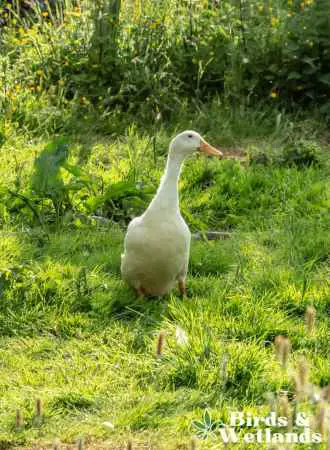
Fruits and Vegetables
Fruits and vegetables can be an important source of nutrition for ducks, especially during the winter months when other food sources are scarce. Some of the best fruits and vegetables for ducks include:
- Peas: This legume is high in protein and is a favorite of many species of ducks.
- Potatoes: These tubers are high in carbohydrates and are a favorite of many species of ducks.
- Tomatoes: These fruits are high in vitamins and minerals and are a favorite of many species of ducks.
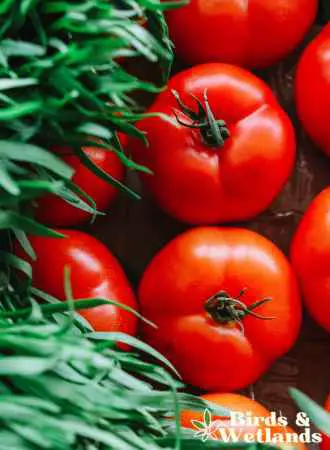
Wildflowers and Weeds
Wildflowers and weeds provide important nectar sources for butterflies and bees, which are in turn important food sources for ducks. Some of the best wildflowers and weeds for ducks include:
- Milkweed: This plant is an important nectar source for butterflies and bees, and its seeds are a favorite of many species of ducks.
- Nightshade: This plant produces small, edible berries that are a favorite of many species of ducks.
- Pennsylvania Smartweed: This plant produces nutritious seeds that are a favorite of many species of ducks.
Planting a diverse range of plants that provide cover, food, and nesting sites is key to creating a thriving habitat for ducks. Native plants are generally the best choice, as they are adapted to local soil types and are less likely to contribute to pollution. By creating food plots and planting a variety of grasses, crops, and wildflowers, gardeners can attract ducks and other wildlife to their property and create a healthy ecosystem.
Best Edible Plants for Ducks to Eat
1. Cabbage
Description: Biennial vegetable plant with dense, leafy heads.
Growing notes: Plant in well-draining soil in a sunny location. Space 12-24 inches apart. Keep soil consistently moist.
Benefits: Provides essential vitamins and minerals, and can be hung in the coop to encourage natural pecking behaviors.
2. Spinach
Description: Fast-growing leafy green with smooth or crinkled leaves.
Growing notes: Plant in rich, well-draining soil in part shade to full sun. Space 2-4 inches apart. Harvest outer leaves when needed.
Benefits: Rich in vitamins and minerals, improving overall health and egg quality.
3. Swiss Chard
Description: Leafy green with colorful stems, producing large, crinkled leaves.
Growing notes: Plant in well-draining soil in full sun or part shade. Space 12 inches apart. Harvest outer leaves to encourage more growth.
Benefits: Provides essential nutrients, aids in digestion, and improves feather health.
4. Beets
Description: Root vegetable with edible leaves and roots, available in various colors.
Growing notes: Plant in loose, fertile soil with full sun or part shade. Space 3-4 inches apart. Harvest leaves young and roots when mature.
Benefits: The leaves are a good source of vitamins and minerals, while the roots can be fed as an occasional treat.
5. Clover
Description: Perennial legume with trifoliate leaves and small flowers.
Growing notes: Plant in well-draining soil in full sun or part shade. Can be used as a cover crop to improve soil fertility.
Benefits: High in protein and beneficial nutrients, improves foraging habitat, and helps maintain a healthy coop environment.
6. Dandelions
Description: Perennial herb with jagged leaves and bright yellow flowers.
Growing notes: Easily found in lawns and meadows, or can be cultivated in well-draining soil in full sun or part shade.
Benefits: Rich in vitamins and minerals, helps with digestion and acts as a natural wormer.
7. Pumpkin
Description: Large, round fruits with orange or yellow flesh and seeds inside.
Growing notes: Plant in well-draining, fertile soil in full sun. Provide ample space, around 48-72 inches apart, for vine growth.
Benefits: The seeds are a natural dewormer, while the flesh provides vitamins and minerals for overall health.
8. Squash
Description: Various fruit sizes and shapes, with flesh and seeds inside.
Growing notes: Plant in well-draining, fertile soil in full sun. Provide ample space, around 18-48 inches apart, depending on the variety.
Benefits: Similar to pumpkins, the seeds are a natural dewormer, and the flesh provides essential nutrients.
9. Zucchini
Description: A type of summer squash with elongated fruits in green or yellow.
Growing notes: Plant in well-draining, fertile soil in full sun. Space 18-24 inches apart. Harvest when young for the best taste and texture.
Benefits: Provides vitamins, minerals, and hydration, and can be used as a boredom buster in the coop.
10. Nasturtium
Description: Annual plant with round leaves and brightly colored, edible flowers.
Growing notes: Plant in well-draining soil in full sun or part shade. Space 8-12 inches apart. Tolerates poor soil but needs regular moisture.
Benefits: The leaves and flowers provide essential nutrients and have natural antibacterial properties, supporting overall health.
11. Marigold
Description: Annual plant with vibrant, pom-pom-like flowers.
Growing notes: Plant in well-draining soil in full sun. Space 8-18 inches apart, depending on the variety. Deadhead spent flowers to encourage more blooms.
Benefits: The flowers have natural insect-repelling properties and can be used to deter pests in the coop.
12. Calendula
Description: Annual plant with daisy-like, edible flowers in warm hues.
Growing notes: Plant in well-draining soil in full sun or part shade. Space 8-12 inches apart. Deadhead spent flowers to encourage more blooms.
Benefits: The petals can help improve yolk color and have natural anti-inflammatory and antimicrobial properties.
13. Mild Asian Greens
Description: A group of leafy greens, including Napa cabbage and bok choy.
Growing notes: Plant in well-draining, fertile soil in full sun or part shade. Space 6-12 inches apart. Harvest outer leaves or whole plants when mature.
Benefits: Provide a range of vitamins and minerals, supporting overall health and egg production.
14. Chicory
Description: Perennial herb with dandelion-like leaves and blue, edible flowers.
Growing notes: Plant in well-draining soil in full sun or part shade. Space 6-12 inches apart. Harvest young leaves for a milder flavor.
Benefits: Aids digestion, provides essential nutrients, and can act as a natural wormer.
15. Lettuce
Description: Annual leafy green available in various textures and colors, forming loose or tight heads.
Growing notes: Plant in well-draining soil in full sun or part shade. Space 6-12 inches apart, depending on the variety. Keep soil consistently moist.
Benefits: Offers hydration and vitamins, making it a healthy treat for ducks, but should not make up a large portion of their diet due to its low nutritional density.
Marigold
Description: Vibrant flowers that support skin and feather health and add color to egg yolks. Planting Guidelines: Plant seeds in well-draining soil and full sun. Space plants 8-10 inches apart. Water moderately.
Benefits: Marigolds contain lutein and zeaxanthin, which improve egg yolk color. They also have anti-inflammatory and anti-parasitic properties, supporting skin and feather health.
Kale
Description: Hardy, nutrient-dense green that’s a favorite among chickens and ducks. Planting Guidelines: Plant seeds in well-draining soil and full sun. Space plants 12-18 inches apart. Water moderately.
Benefits: Kale is high in vitamins, minerals, and antioxidants, supporting immune health and overall well-being.
Mâche
Description: Cold-hardy green, tastes nutty, and can be enjoyed by both humans and poultry. Planting Guidelines: Plant seeds in well-draining soil and partial to full sun. Space plants 4-6 inches apart. Water regularly.
Benefits: Mâche is a good source of vitamins and minerals, promoting overall health and well-being.
Austrian Winter Peas (greens/leaves)
Description: Cold-hardy, high in protein, and a great nitrogen-fixing cover crop.
Planting Guidelines: Plant seeds in well-draining soil and full sun. Space plants 2-4 inches apart. Water moderately.
Benefits: Austrian winter pea leaves are high in protein, supporting growth and egg production.
How to Plant for Ducks
When it comes to planting for ducks, there are a few key factors to consider. Researching your area, choosing the right plants, and utilizing proper planting techniques can all help attract ducks to your property.
Research Your Area
Before planting for ducks, it’s important to research your area. This includes understanding the soil types, native plants, and typical weather patterns. Knowing this information can help you choose plants that are well-suited for your area and that will thrive in the conditions present.
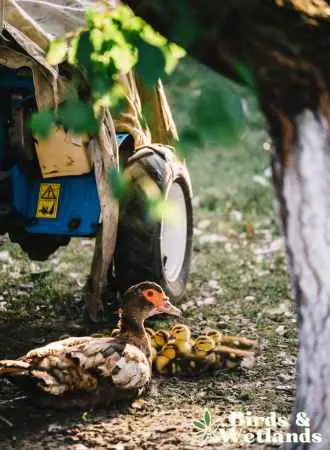
Choose the Right Plants
Choosing the right plants is crucial when planting for ducks. Aquatic plants, grasses and crops, fruits and vegetables, and wildflowers and weeds are all great options to consider.
Some popular choices for duck-friendly plants for your backyard ducks include wild rice, barnyard grass, and corn. It’s important to choose plants that provide both food and cover for ducks, as well as plants that are well-suited for your specific area.
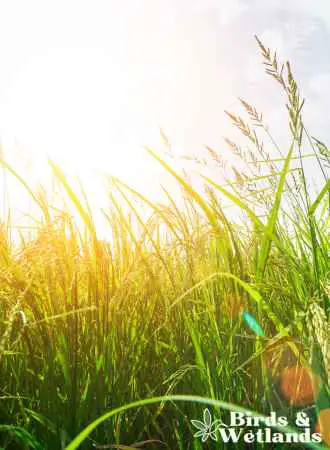
Planting Techniques
Proper planting techniques are also important when planting for ducks. Tilled areas and shallow water are both great options for planting duck-friendly plants.
When planting in shallow water, it’s important to ensure that the plants are submerged in water, but not completely covered. This allows ducks to access the plants easily while still providing them with cover.
Planting for ducks requires some research and planning, but it can be a fun and rewarding experience. By choosing the right plants and utilizing proper planting techniques, you can attract ducks to your property and create a thriving habitat for these beautiful birds.
FAQs on Duck Friendly Plants
What is the best thing to plant for ducks?
For backyard ducks, the best thing to plant is a variety of edible plants that provide fresh greens and other nutritious foods. Examples include leafy greens, cherry tomatoes, and snap peas. When raising ducks, it is important to choose plants that produce fruit or vegetables that ducks love to eat.
What plants should I put in my duck pond?
To create a natural habitat for your ducks, you can plant a variety of water-loving plants at the pond’s edge. Some suitable options include Vallisneria americana (eelgrass), which spreads quickly and provides dense stands of vegetation for ducks to forage in. Other plants that grow well in standing water and provide good cover for ducks include sedges and rushes.
What will grow in standing water for ducks?
There are several plants that can grow in standing water, providing excellent vegetation for ducks to forage and take cover. These include duckweed, water lilies, and cattails. These plants are native to North America and can thrive in pond environments, creating a natural habitat for waterfowl.
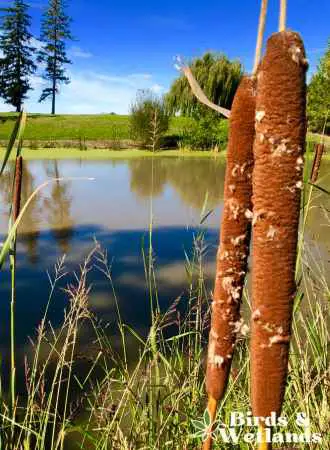
What plants are toxic to ducks?
It is crucial to avoid planting toxic plants in areas where ducks can access them. Some common toxic plants to ducks include foxglove, rhubarb, and azalea. If you are unsure whether a plant is safe for your ducks, consult with a veterinarian or duck care expert before planting it in your garden or pond area.
What plants are safe around ducks?
Many plants are safe around ducks and can provide them with valuable food sources, such as leafy greens, berries, and other edible fruits and vegetables. When planning a garden or pond for ducks, opt for plants that are both safe and beneficial for their well-being, such as kale, lettuce, spinach, peas, and tomatoes.
Best Plants for Indian Runner Ducks
Indian Runners, like other duck breeds, will benefit from a variety of plants in their environment that provide them with fresh greens, fruits, and vegetables. Here are some excellent plant options to grow for Indian Runner ducks:
- Leafy greens: Ducks eat kale, lettuce, and spinach are great options for providing fresh greens to your ducks. These plants are nutrient-rich and will help supplement their diet.
- Fruit and vegetable plants: Indian Runner ducks will enjoy foraging on cherry tomatoes, peas, and berries. These plants provide additional nutrients and variety to their diet.
- Water plants: If you have a pond or water source for your Indian Runner ducks, consider planting duckweed, water lilies, and cattails. These plants will grow well in standing water and provide additional forage and cover for the ducks.
- Grasses and sedges: Planting grasses and sedges around the pond or in their free-range area will offer cover and a place for the ducks to forage for insects and other small creatures.
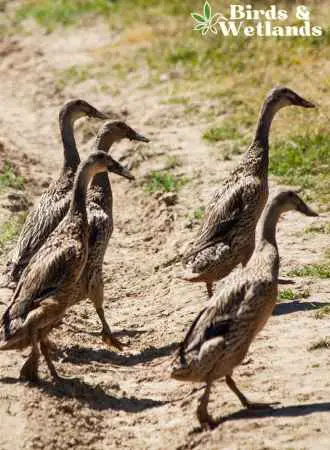
How does duck manure contribute to pest control when ducks free range?
When ducks are allowed to free range, they serve as natural pest control by foraging for insects, slugs, and other pests in the garden. Duck manure, a byproduct of their foraging, is an added benefit as it serves as an organic fertilizer, enriching the soil and promoting plant growth.
This combination of pest control and soil enrichment helps to maintain a healthy garden without the need for harsh chemicals. Remember though, ducks are greedy birds so plant plenty and include a fast growing plant. You can use chicken wire to keep the ducks away form the good plant.
What types of aquatic plants do waterfowl eat that grow beneath the water’s surface?
Waterfowl, such as ducks and geese, consume a variety of aquatic plants that grow beneath the water’s surface. Some of these plants, including pondweed, southern naiad, wild celery, wigeon grass, coontail, and milfoil, complete their life cycle without ever breaking the water’s surface.
These submerged plants provide essential nutrients and play a crucial role in the diet of waterfowl, supporting their health and well-being.
Best Waterfowl Feed
Delightful Feeding Experience
Transform your backyard into a scenic waterfowl habitat and enjoy an interactive feeding experience with Natural Waterscapes Waterfowl Floating Food.

Pros
- Nutritious Food: Natural Waterscapes Waterfowl Floating Food is specifically designed to provide essential nutrients to waterfowl, including swans, geese, and ducks, helping them maintain a healthy diet.
- Convenient: The food comes in resealable packaging, making it easy to store and use as needed. It is also easy to handle and transport.
- Floating Formula: The floating formula of the food allows it to remain on the surface of the water, making it easier for waterfowl to eat and minimizing the risk of water contamination.
- Attracts Waterfowl: The food is formulated to attract various waterfowl species, including swans, geese, and ducks, to your pond, lake, or other water body, providing an opportunity to observe and enjoy these beautiful creatures.
- Environmentally Friendly: Natural Waterscapes Waterfowl Floating Food is made with environmentally friendly ingredients and does not contain any harmful preservatives, making it safe for both waterfowl and the environment.
Cons
- Shelf Life: The food’s shelf life may be limited compared to other types of waterfowl food due to its natural ingredients and lack of preservatives. This means you may need to use it up quickly after opening the package to prevent it from going bad.

